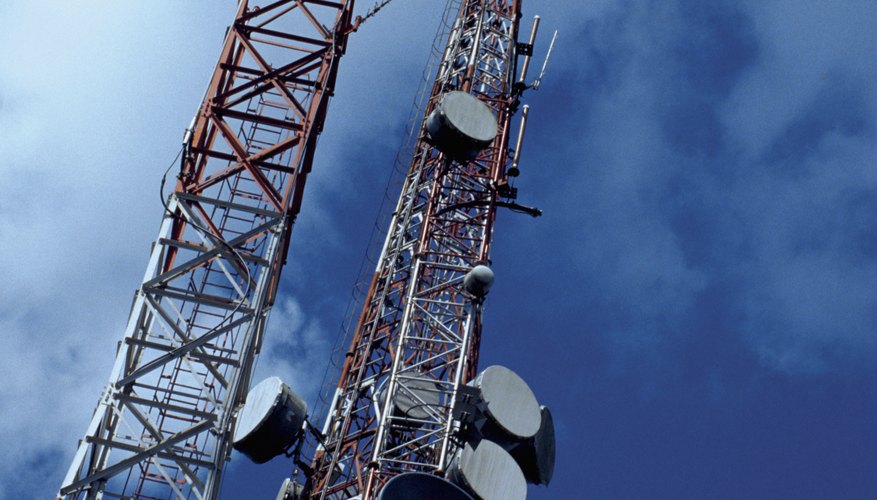For years mobile phone operators have competed against each other to provide bigger and better networks. As a result, there are now over 54,000 mast sites in the UK according to Ofcom. As the owner of a piece of land, you may be happy to lease a small square of it to a mobile phone operator for a mast in return for an income from rent. Most mobile phone towers are built on land sourced by the phone operators themselves to meet a local need and there are a few ways to check whether your land might qualify.
Considerations
Mobile phone masts, or base stations, are built where customers need coverage. According to the website Mobile Mast Info, they are usually placed about 200 to 500 metres (650 to 1,650 feet) apart in towns and 1 to 3 miles (2 to 5 kilometres) apart in rural areas. Ofcom keeps data on the location and operating characteristics of individual base stations. You can search this to find out whether your land is in an area of poor coverage. If it is not, you are out of luck.
- Mobile phone masts, or base stations, are built where customers need coverage.
- You can search this to find out whether your land is in an area of poor coverage.
Location
Masts tend to be sited on offices, blocks of flats, church steeples and farm buildings. If your land is a residential home or garden, it is unlikely to be considered as a mast site. In a recent interview with the Daily Mail, a spokesman for O2 said the company did not currently use individual houses to site masts. However, they do keep a list of people who have offered their properties in case this policy changes in the future.The sites most likely to be considered are ones which are on high ground or an elevated structure; are near to an area of high population density, but a reasonable distance from residential properties; have, or are near to a power supply; and are in an area where the current mobile phone coverage is poor.
- Masts tend to be sited on offices, blocks of flats, church steeples and farm buildings.
- The sites most likely to be considered are ones which are on high ground or an elevated structure; are near to an area of high population density, but a reasonable distance from residential properties; have, or are near to a power supply; and are in an area where the current mobile phone coverage is poor.
Marketing
If you think that your land might be suitable, you can market it via estate agents who specialise in telecommunications, via websites such as The Phone Mast Company who keep a list of available sites, or by contacting the four major operators direct. Ask for the "wayleaves" department.
Regulations
Having a beneficial site is only the beginning of the matter. There are no specific regulations setting out where mobile phone should place their masts, but under siting procedures called "The Ten Commitments," operators must ensure that masts are sensitively placed, and must consult the public, community groups, schools and parish councils as well as local planning authorities about proposed mobile base station sites - any one of whom could object.
Documentation
If the mobile phone company uses your land, you will be asked to sign a legal document. This might be called a licence, or a lease. If you give the mobile phone operator an interest in your land, and exclusive possession of it, the agreement will be a lease. If you give them mere permission to place equipment on your premises, the agreement will be a licence. The relevance of this question is that for leases (but not licences) the Landlord and Tenant Act 1954 applies which will give the operator the right to remain on the property after the lease comes to an end. You may not want this if you have future redevelopment plans, or wish to sell your property.
- If the mobile phone company uses your land, you will be asked to sign a legal document.
- If you give them mere permission to place equipment on your premises, the agreement will be a licence.
Legislation
Further legislation specific to the telecommunications industry could also fetter the way you deal with your property once its has telecommunications equipment on it. The Electronic Communications Code contains a complex notice and counter-notice procedure which must be gone through before a landowner can have telecommunications equipment on its land removed or re-sited, even temporarily, for example, to repair a roof. This can involve court proceedings, and be time-consuming and costly.
